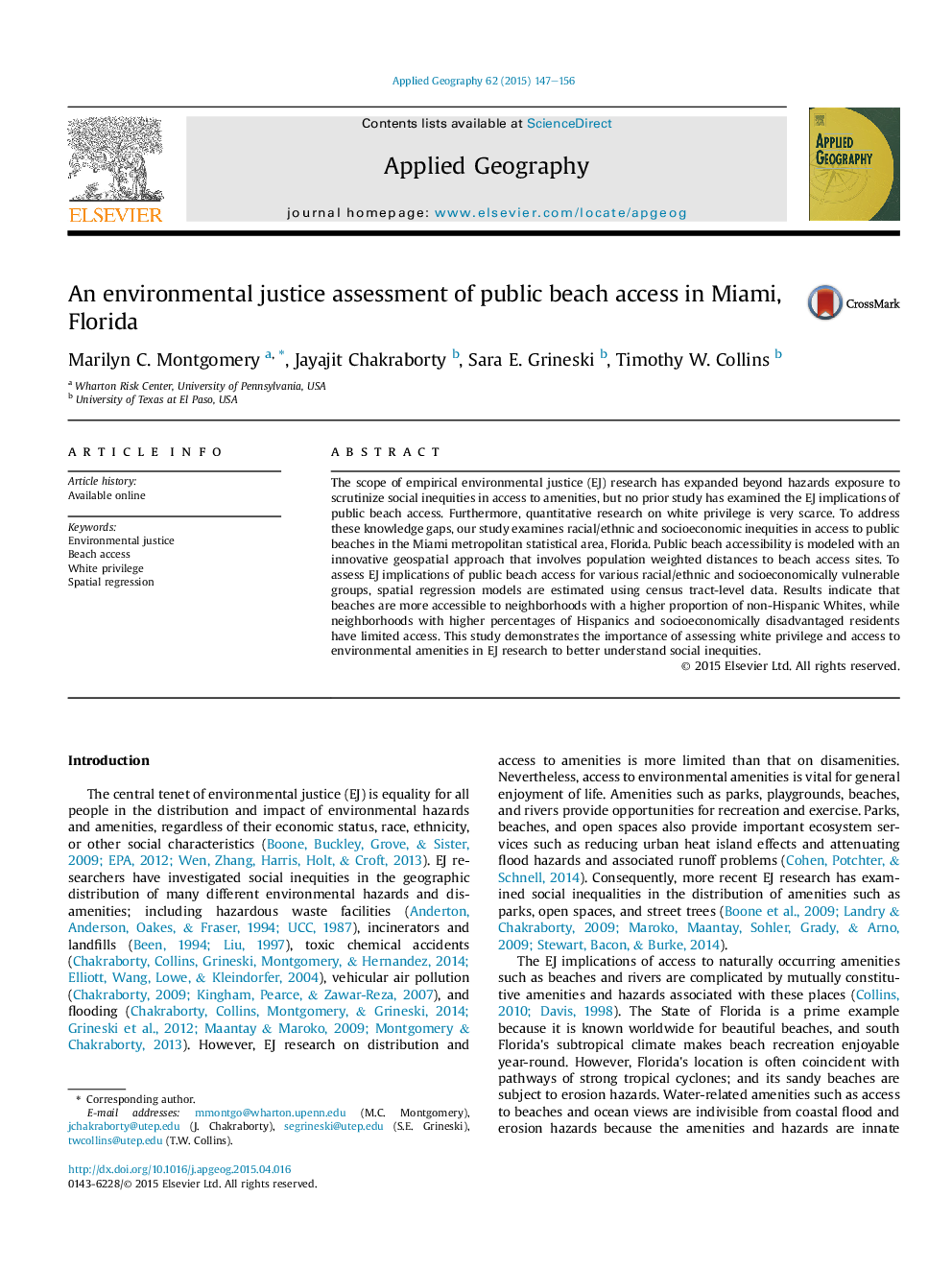| Article ID | Journal | Published Year | Pages | File Type |
|---|---|---|---|---|
| 6538502 | Applied Geography | 2015 | 10 Pages |
Abstract
The scope of empirical environmental justice (EJ) research has expanded beyond hazards exposure to scrutinize social inequities in access to amenities, but no prior study has examined the EJ implications of public beach access. Furthermore, quantitative research on white privilege is very scarce. To address these knowledge gaps, our study examines racial/ethnic and socioeconomic inequities in access to public beaches in the Miami metropolitan statistical area, Florida. Public beach accessibility is modeled with an innovative geospatial approach that involves population weighted distances to beach access sites. To assess EJ implications of public beach access for various racial/ethnic and socioeconomically vulnerable groups, spatial regression models are estimated using census tract-level data. Results indicate that beaches are more accessible to neighborhoods with a higher proportion of non-Hispanic Whites, while neighborhoods with higher percentages of Hispanics and socioeconomically disadvantaged residents have limited access. This study demonstrates the importance of assessing white privilege and access to environmental amenities in EJ research to better understand social inequities.
Related Topics
Life Sciences
Agricultural and Biological Sciences
Forestry
Authors
Marilyn C. Montgomery, Jayajit Chakraborty, Sara E. Grineski, Timothy W. Collins,
